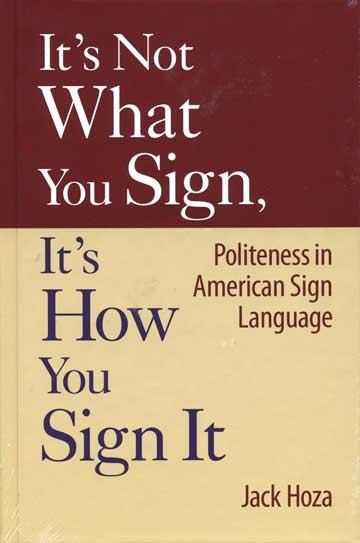 Loading... Please wait...
Loading... Please wait...- Visit Us: 8400 Menaul Blvd, Suite F, Albuquerque, NM 87112
- Home
- Books & Multimedia
- Interpreting
- It's Not What You Sign, It's How You Sign It (TE)
Shop our Store
It's Not What You Sign, It's How You Sign It (TE)
Product Description
The general stereotype regarding interaction between American Sign Language and English is a model of oversimplification: ASL signers are direct and English speaker are indirect. In this study, Jack Hoza upends this common impression through an in-depth comparison of the communication styles between these two language communities. He investigates relevant social variables and explores the particular linguistic strategies ASL signers and English speakers employ when they interact in specific contexts.
This analysis is framed within politeness theory, an apt model to determine various interpretations of what speakers or signers mean in respect to the form of that which they say or sign. The variations reveal how linguistic and cultural differences intersect in ways that are often misinterpreted or overlooked in cross-cultural communication. To clarify these cross-linguistic differences, this volume explores two primary types of politeness-requests and rejects-and the linguistic strategies used by English speakers and ASL signers to express politeness in face-to-face interactions. Hoza's final analysis leads to a better understanding of the rich complexity of the linguistic choices of these language groups. [Hoza, Jack; (2007) 248 pages; hard cover]
This analysis is framed within politeness theory, an apt model to determine various interpretations of what speakers or signers mean in respect to the form of that which they say or sign. The variations reveal how linguistic and cultural differences intersect in ways that are often misinterpreted or overlooked in cross-cultural communication. To clarify these cross-linguistic differences, this volume explores two primary types of politeness-requests and rejects-and the linguistic strategies used by English speakers and ASL signers to express politeness in face-to-face interactions. Hoza's final analysis leads to a better understanding of the rich complexity of the linguistic choices of these language groups. [Hoza, Jack; (2007) 248 pages; hard cover]


